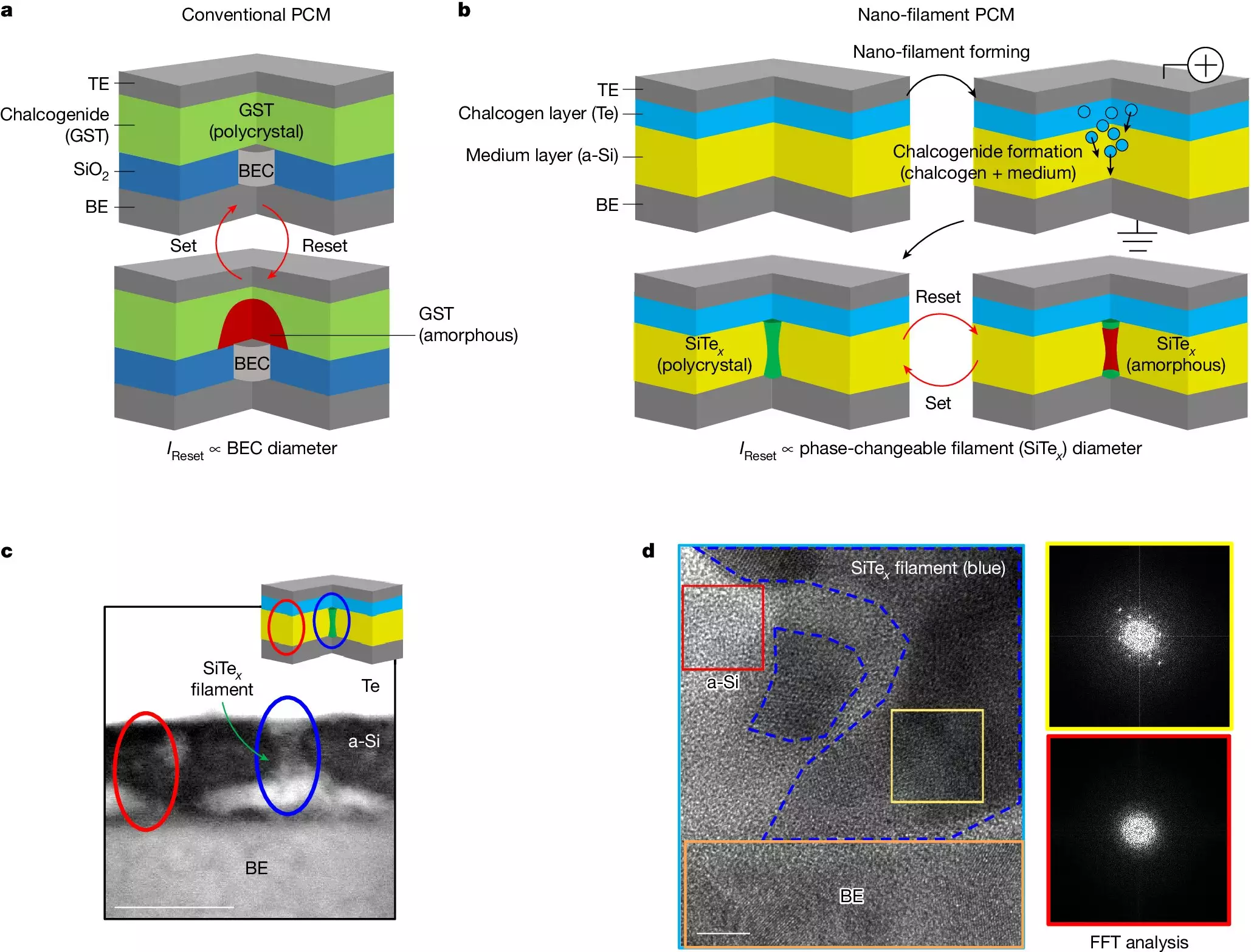In a breakthrough development, a team of Korean researchers at the KAIST School of Electrical Engineering have introduced a new memory device that has the potential to revolutionize the landscape of artificial intelligence hardware. This innovative phase change memory device boasts ultra-low-power consumption and low processing costs, making it a promising candidate to replace existing memory technologies such as DRAM and NAND flash memory.
The Need for Advancements
The existing phase change memory devices have been plagued by costly fabrication processes and high power consumption requirements. These limitations have hindered the practicality of large-capacity memory products and the implementation of neuromorphic computing systems. In response to these challenges, Professor Shinhyun Choi’s research team set out to develop an ultra-low-power phase change memory device that could address these issues effectively.
The groundbreaking aspect of the new phase change memory device lies in its ability to form a small nanometer-scale phase changeable filament without the need for expensive lithography processes. This innovative approach not only significantly reduces the manufacturing costs but also enables the device to operate with ultra-low power consumption. By combining the speed of DRAM with the non-volatile characteristics of NAND flash memory, the new phase change memory device offers a compelling solution for next-generation memory technology.
Unlike DRAM, which is fast but volatile, and NAND flash memory, which is slower but non-volatile, phase change memory strikes a balance between speed and data retention. This unique combination makes it an attractive option for replacing current memory solutions and advancing the field of neuromorphic computing. By consuming 15 times less power than conventional phase change memory devices, the new memory device developed by Professor Shinhyun Choi’s team demonstrates a significant leap forward in energy efficiency and cost-effectiveness.
Professor Shinhyun Choi expressed his confidence in the future impact of this research, emphasizing the novel approach it offers for overcoming the persistent challenges in memory device production. With a focus on improving manufacturing costs and energy efficiency, the development of the ultra-low-power phase change memory device marks a pivotal moment in the evolution of memory technologies.
The emergence of ultra-low-power phase change memory signals a promising future for memory devices and artificial intelligence hardware. By addressing the shortcomings of existing memory technologies and achieving remarkable gains in energy efficiency, this innovative solution has the potential to reshape the way we think about memory storage and computing systems. As researchers continue to push the boundaries of technological innovation, it is clear that the era of ultra-low-power memory devices is on the horizon, offering new possibilities for the advancement of AI hardware.


Leave a Reply